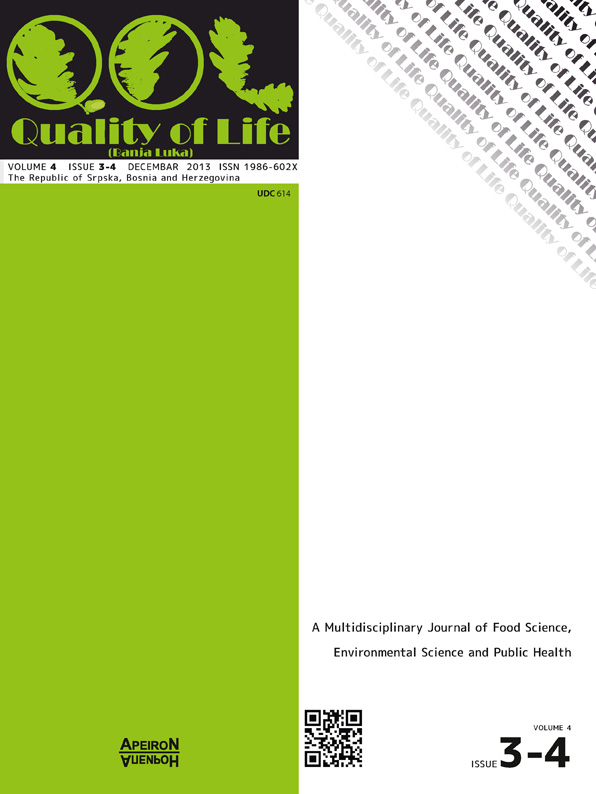The Influence of Garlic Powder in Broiler Feed on Carcass and Breast Meat Quality
DOI:
https://doi.org/10.7251/QOL1303055DZAbstract
In this study the carcass and quality (nutritive, technological and sensory) of broiler breast meat were analysed. Hubbard chickens were used for investigations (n=200). There were two groups of samples: control group (C) chickens fed with standard mixture, and experimental group (E) chickens fed with standard feed mixture supplemented with 2% of garlic powder. The trial lasted 42 days. Experimental group had higher (p<0.05) meat yield in chickens breast, but significant effect of garlic addition on nutritive quality of chicken breast meat were not noted.In the breast meat of the experimental group E significantly (P < 0.05) higher protein content and lower (P < 0.05) fat content, compared to control (C), was found. Cholesterol levels in breast meat of the experimental group E (46.1 mg/100g) was significantly lower (P < 0.05) compared to the control group (60.1 mg/100g). The average technological quality of breast meat of groups regarding to pHk, as the parameter and criteria for determining the quality of breast meat corresponds to PSE. The average technological quality of breast meat of control and experimental group according to colouru (L*), as the parameter and criteria for determining the quality of breast meat, corresponds to “normal quality”. According to results of sensory analyzes, roasted breast meat of the experimental group had significantly (P < 0.01) preferable juiciness and tenderness.
Downloads
Published
2013-12-20
Issue
Section
Чланци
